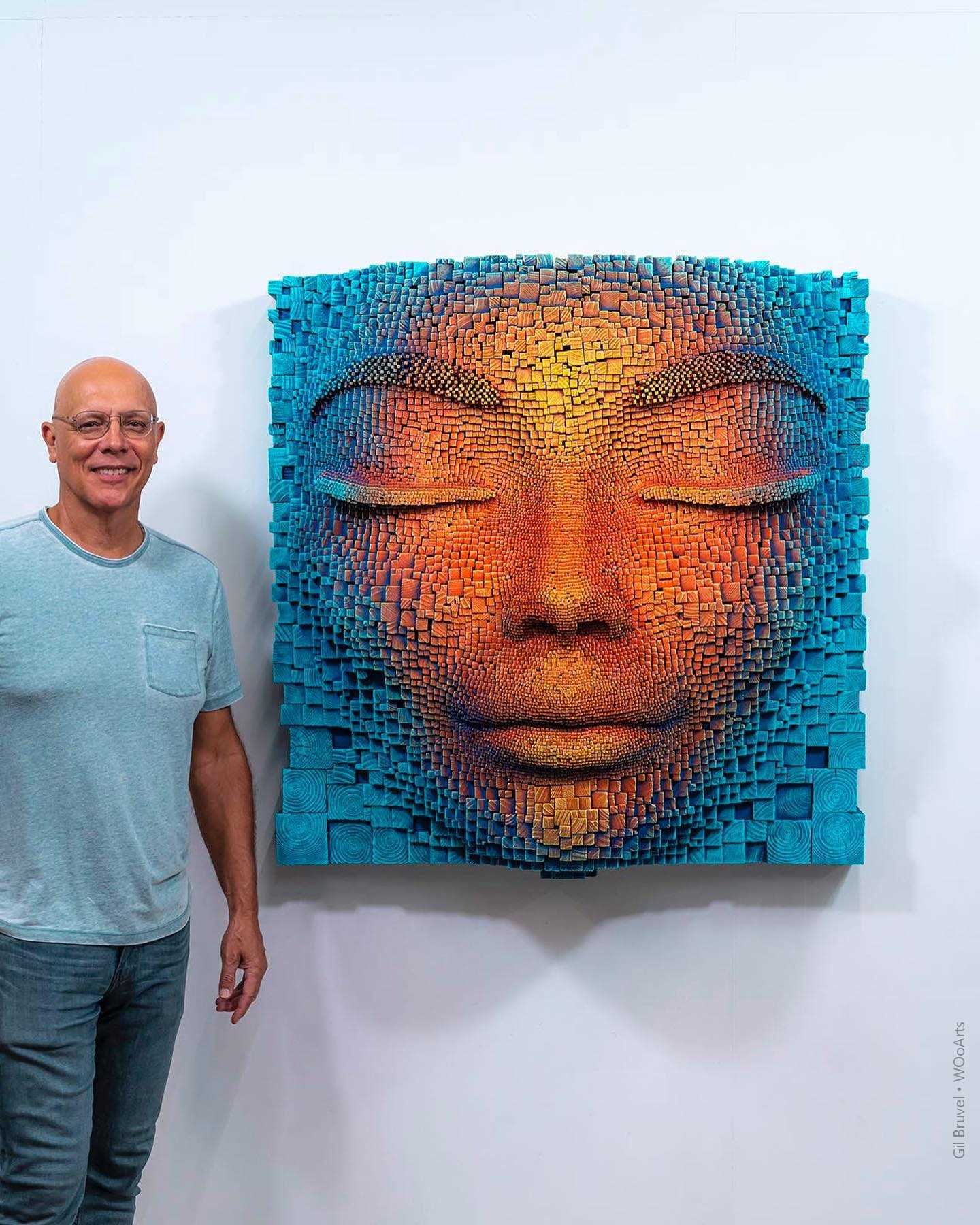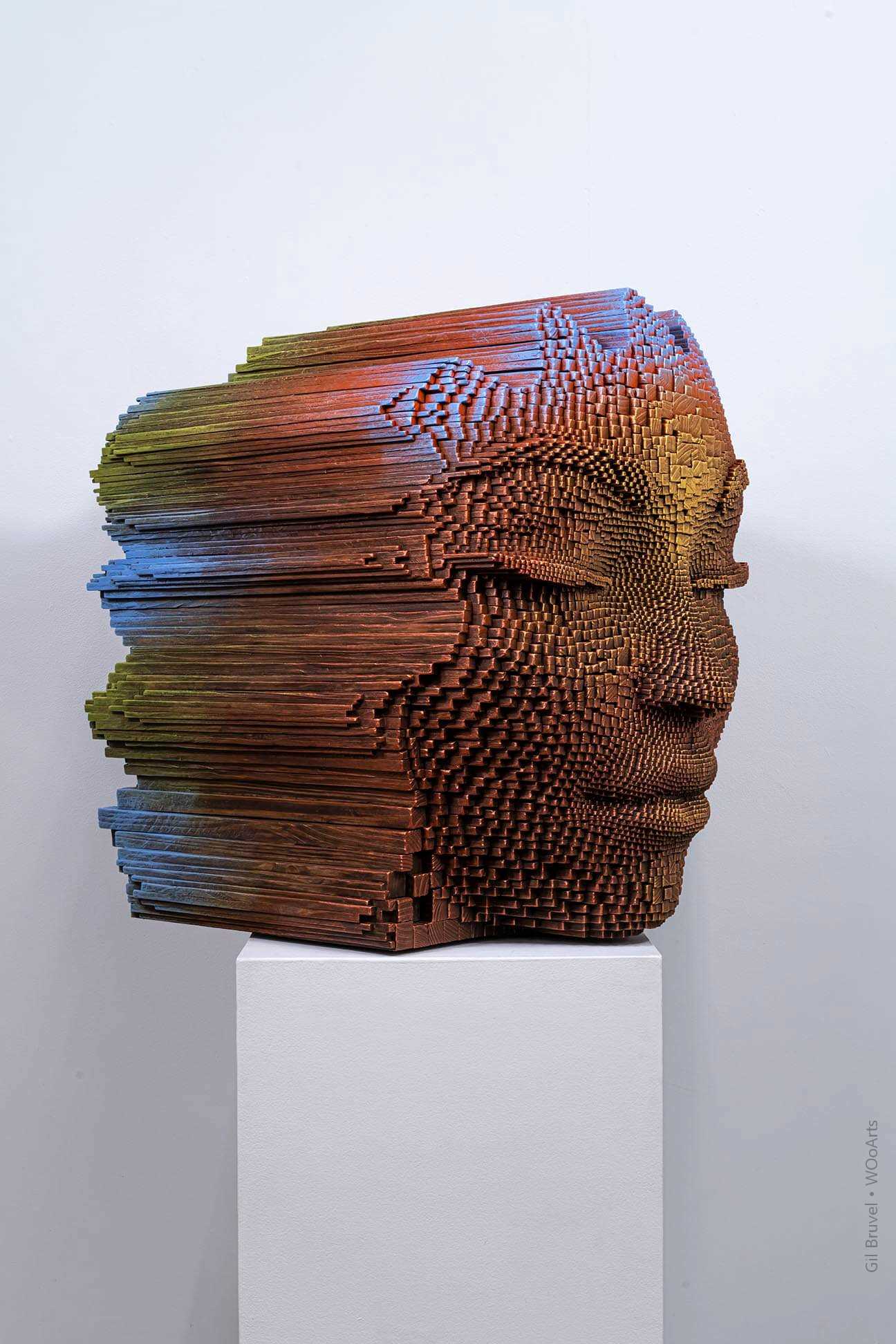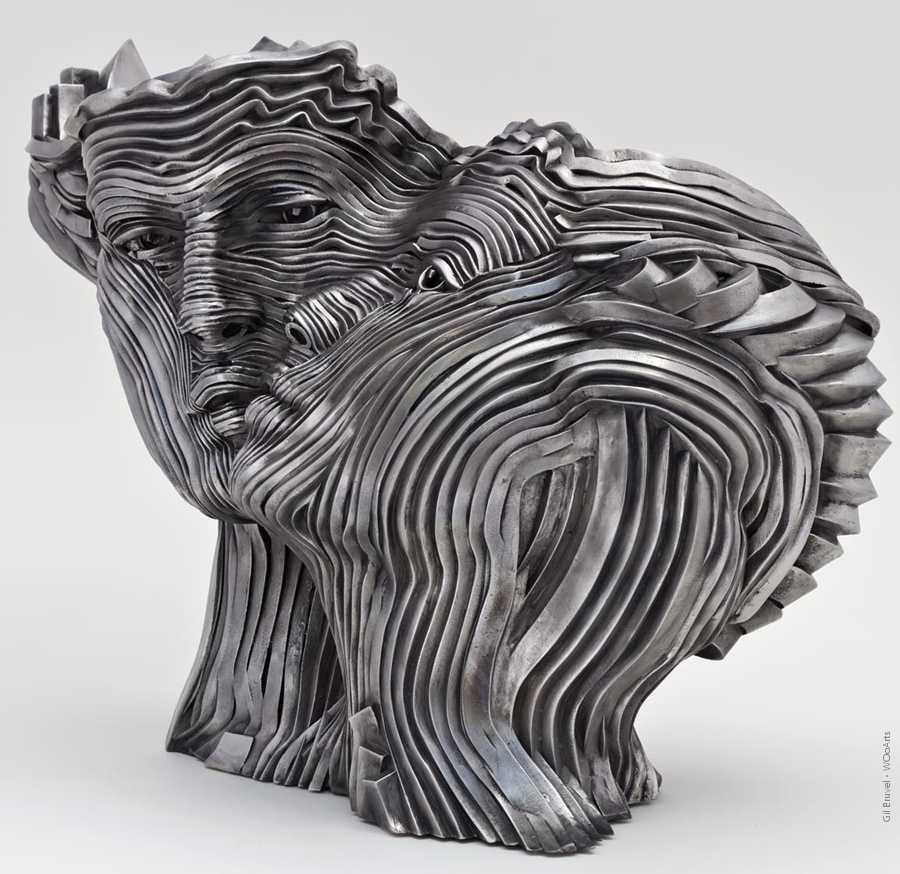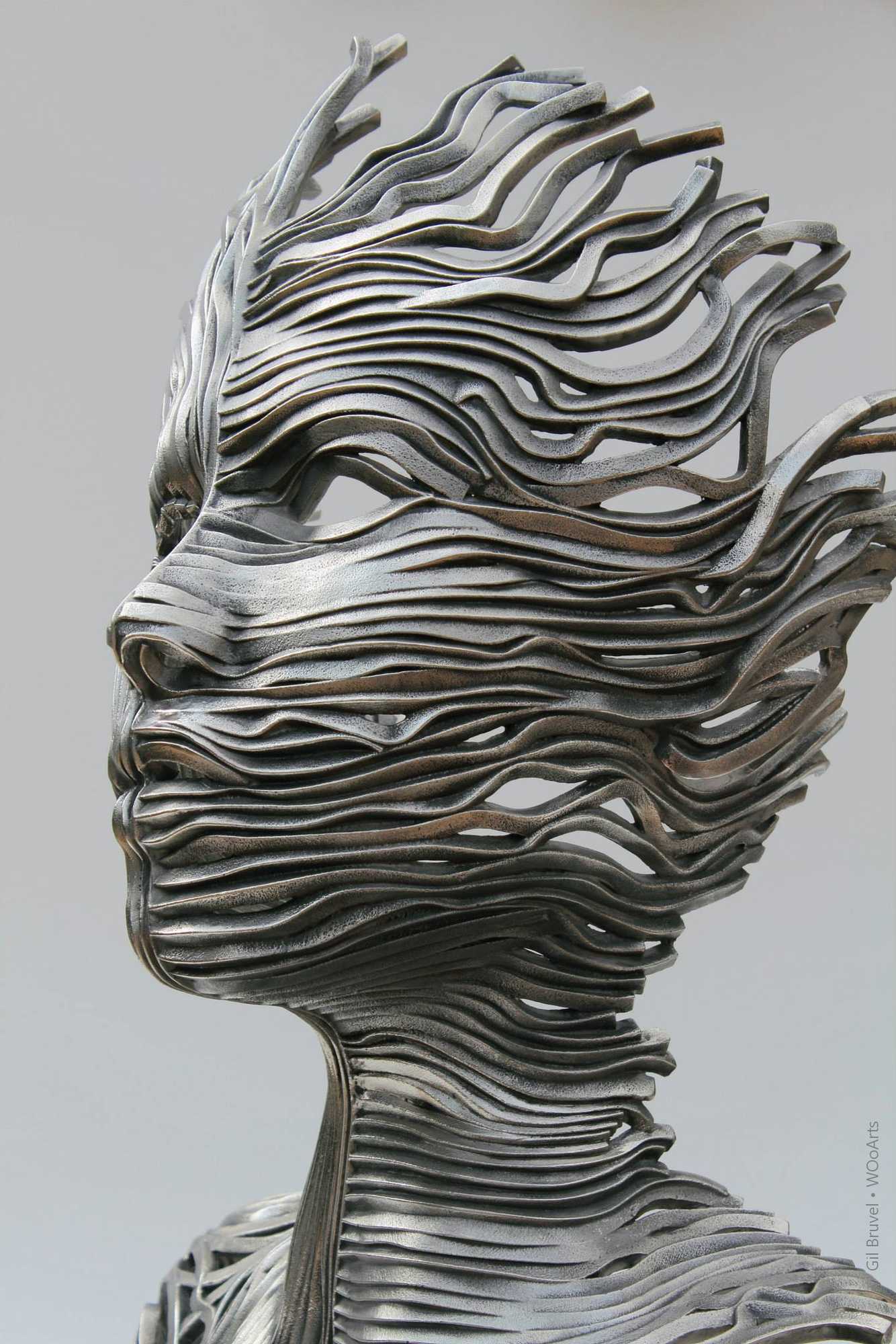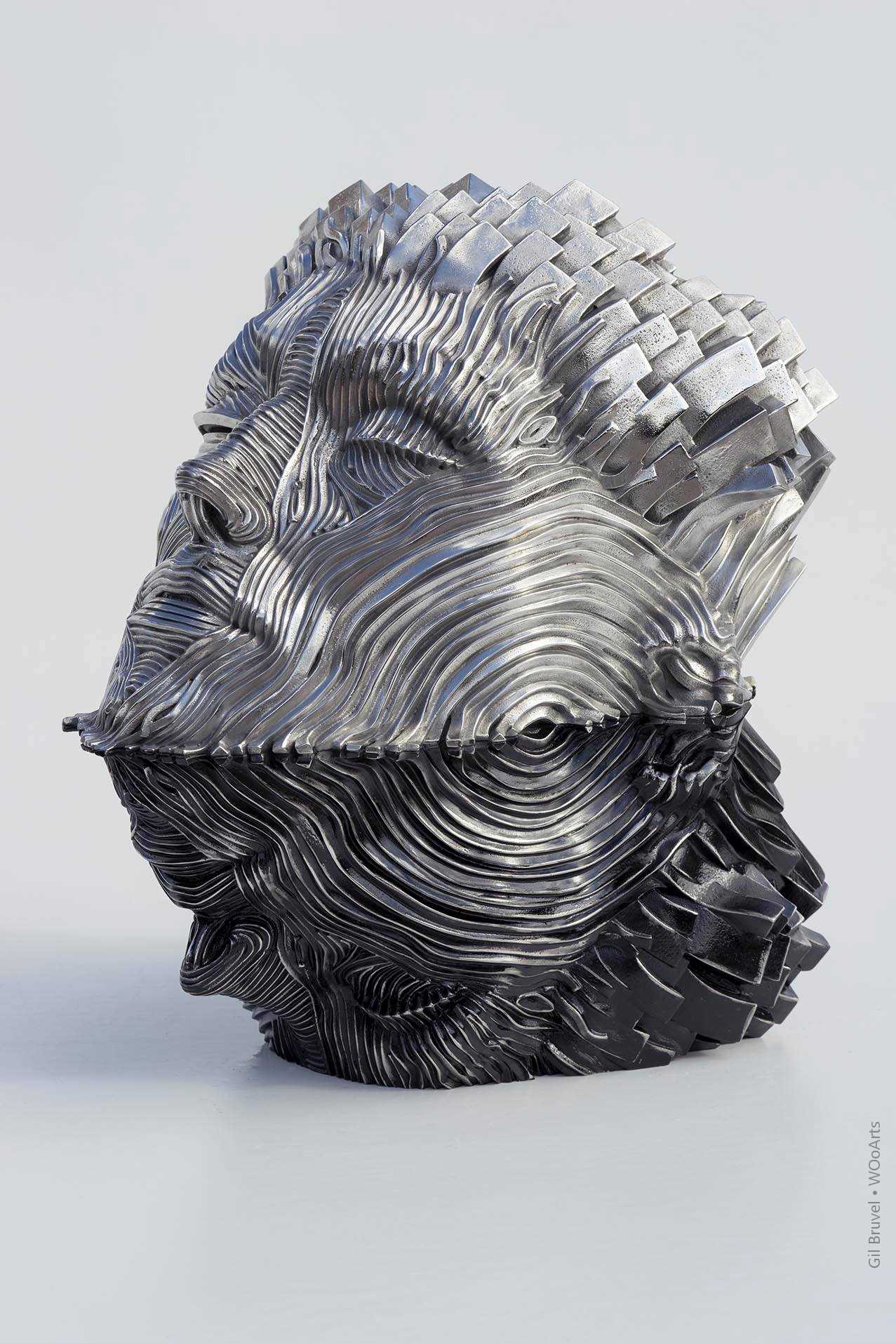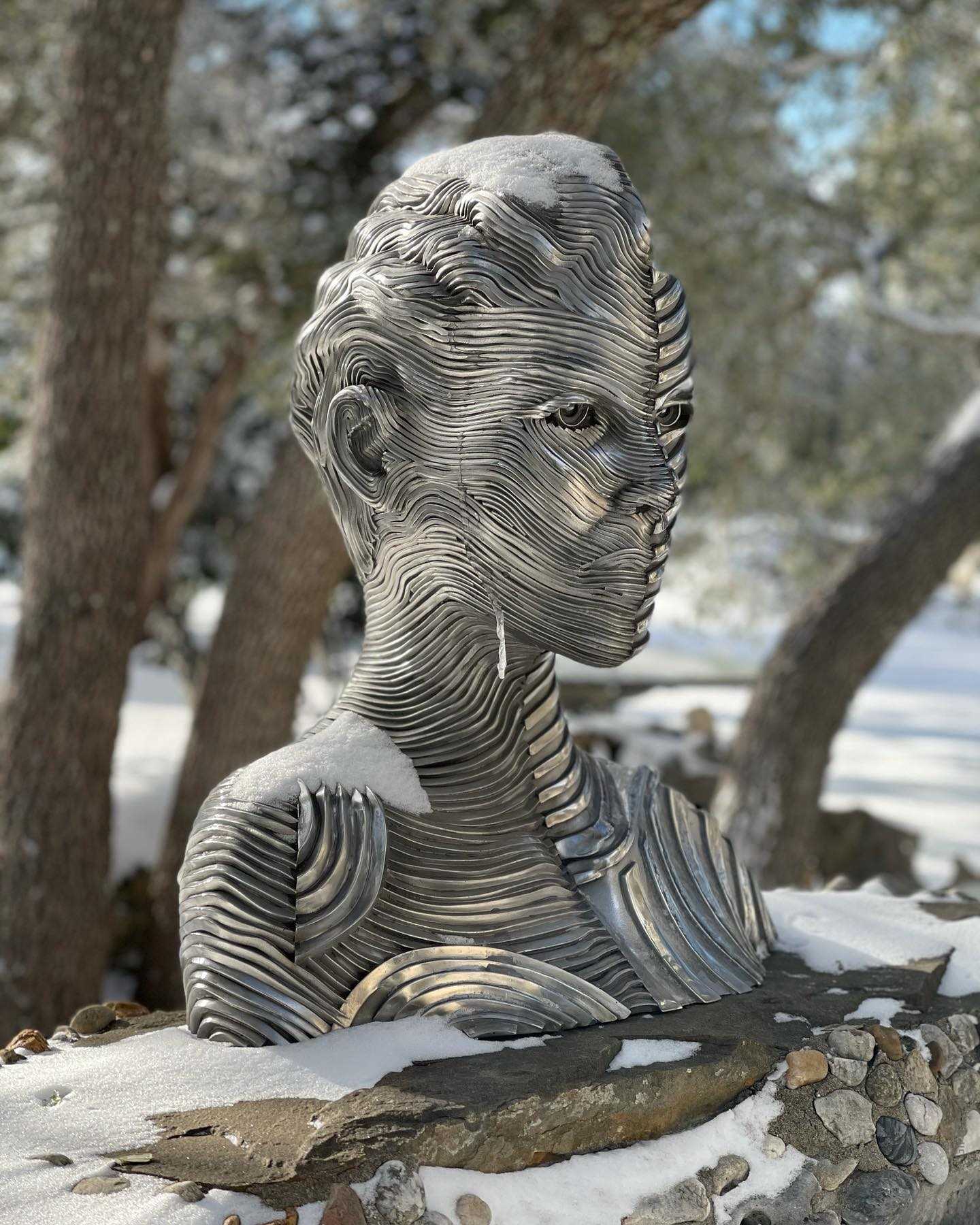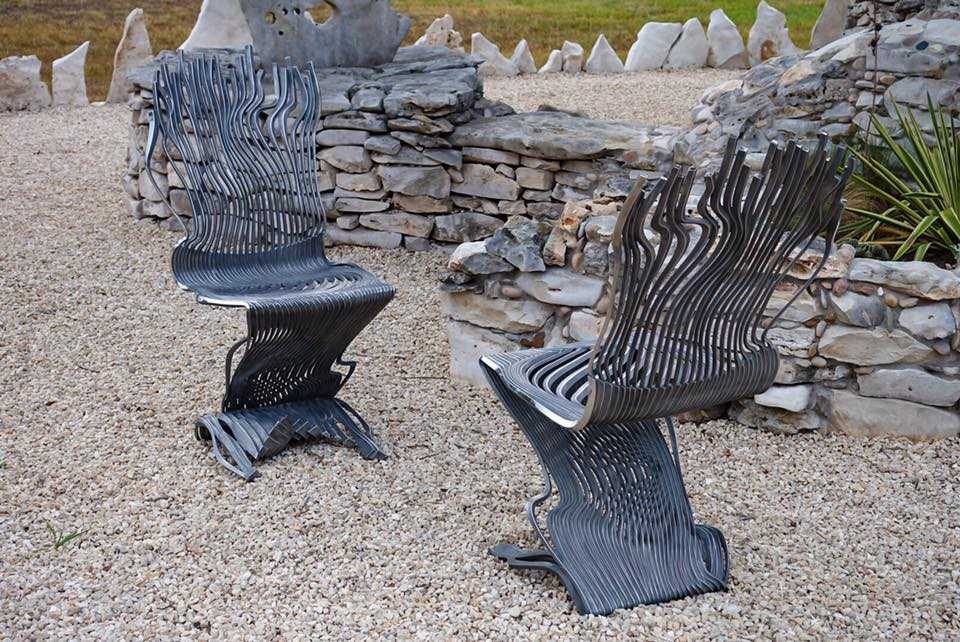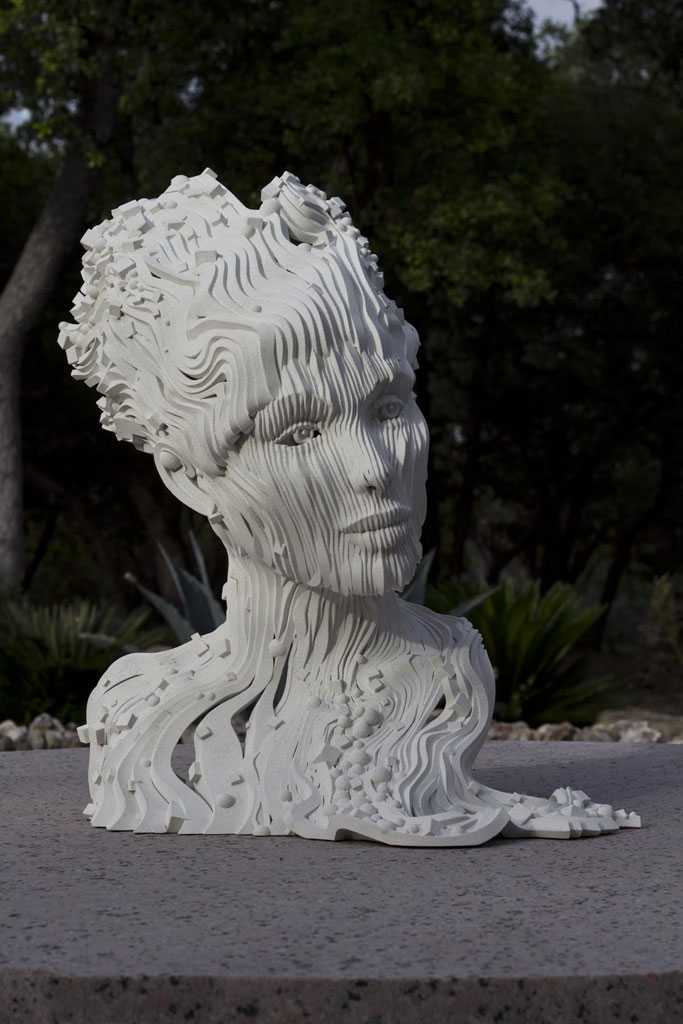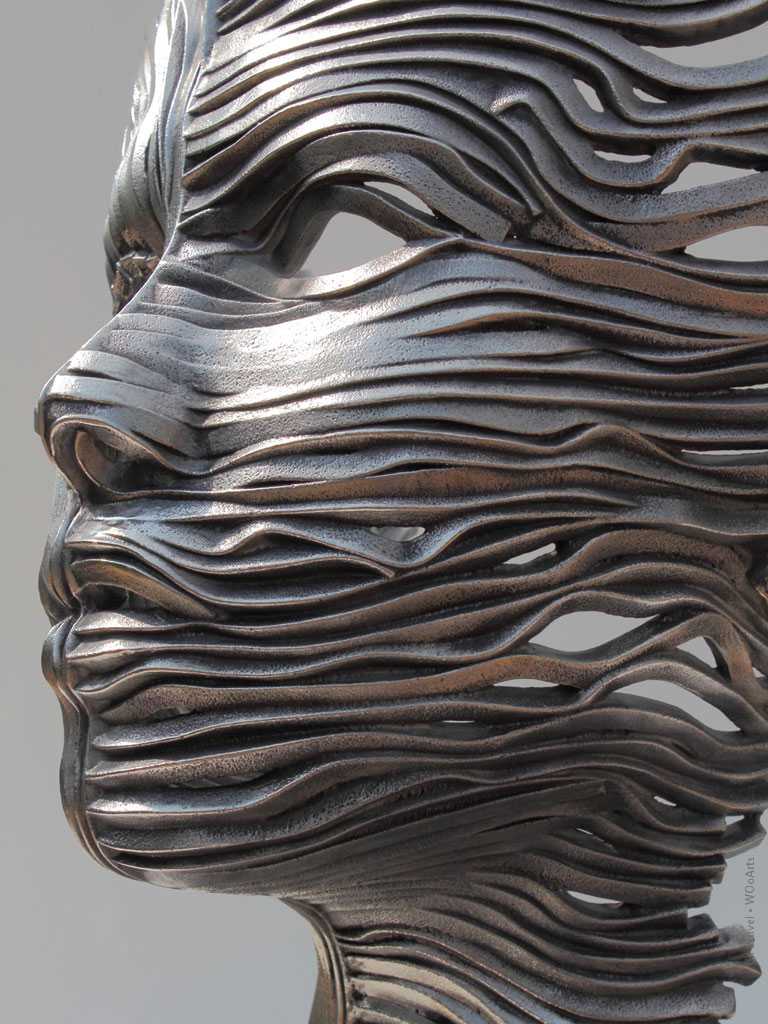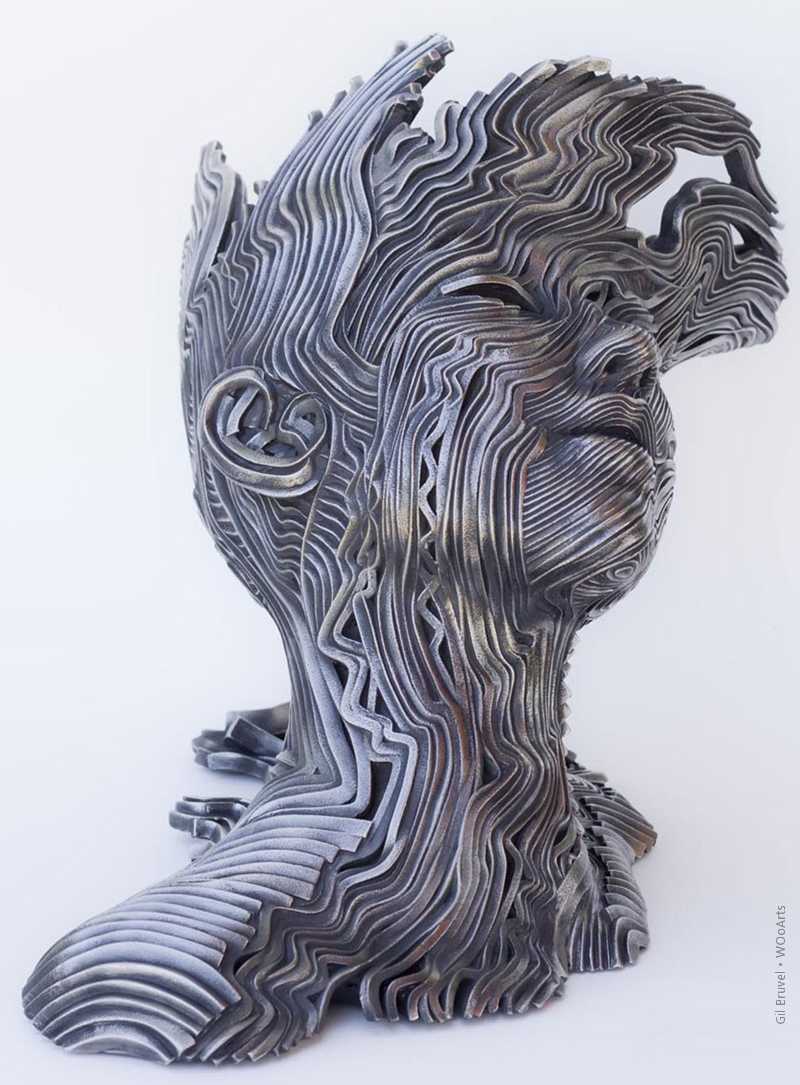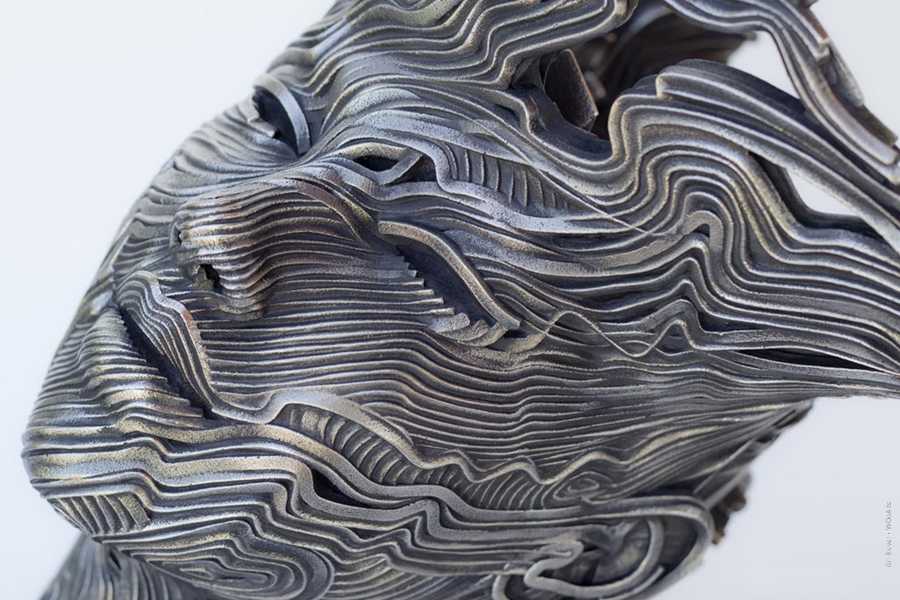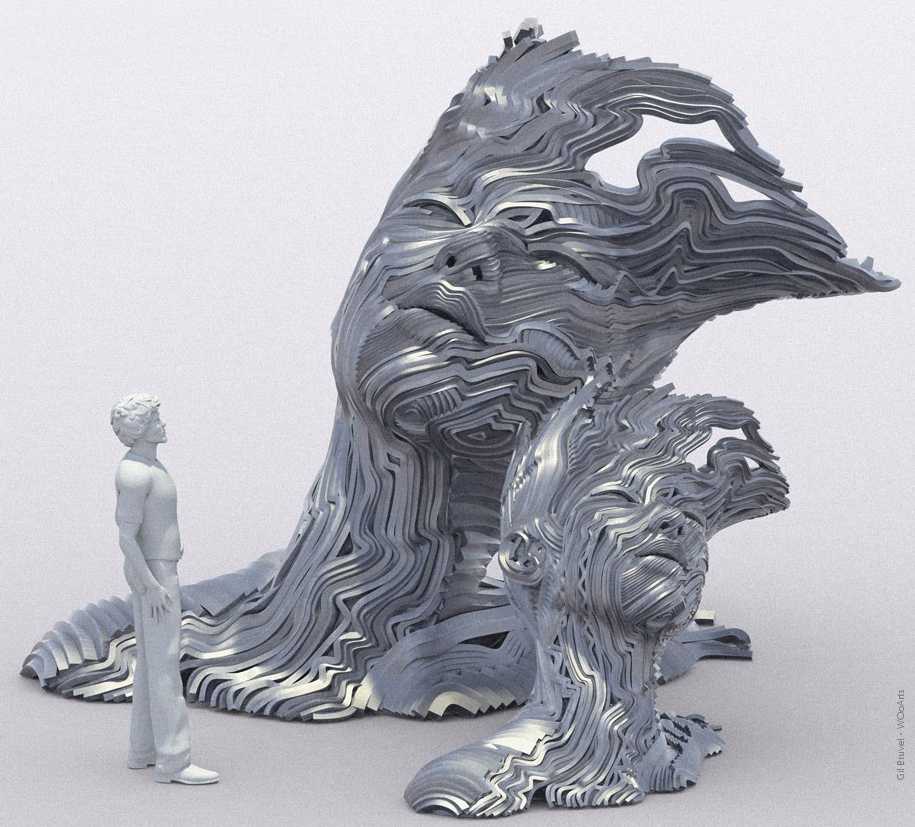Gil Bruvel’s work often combines elements of sculpture, painting, and other artistic mediums to create visually striking and thought-provoking pieces. Here is a detailed critique that encompasses various aspects of his artistic practice:
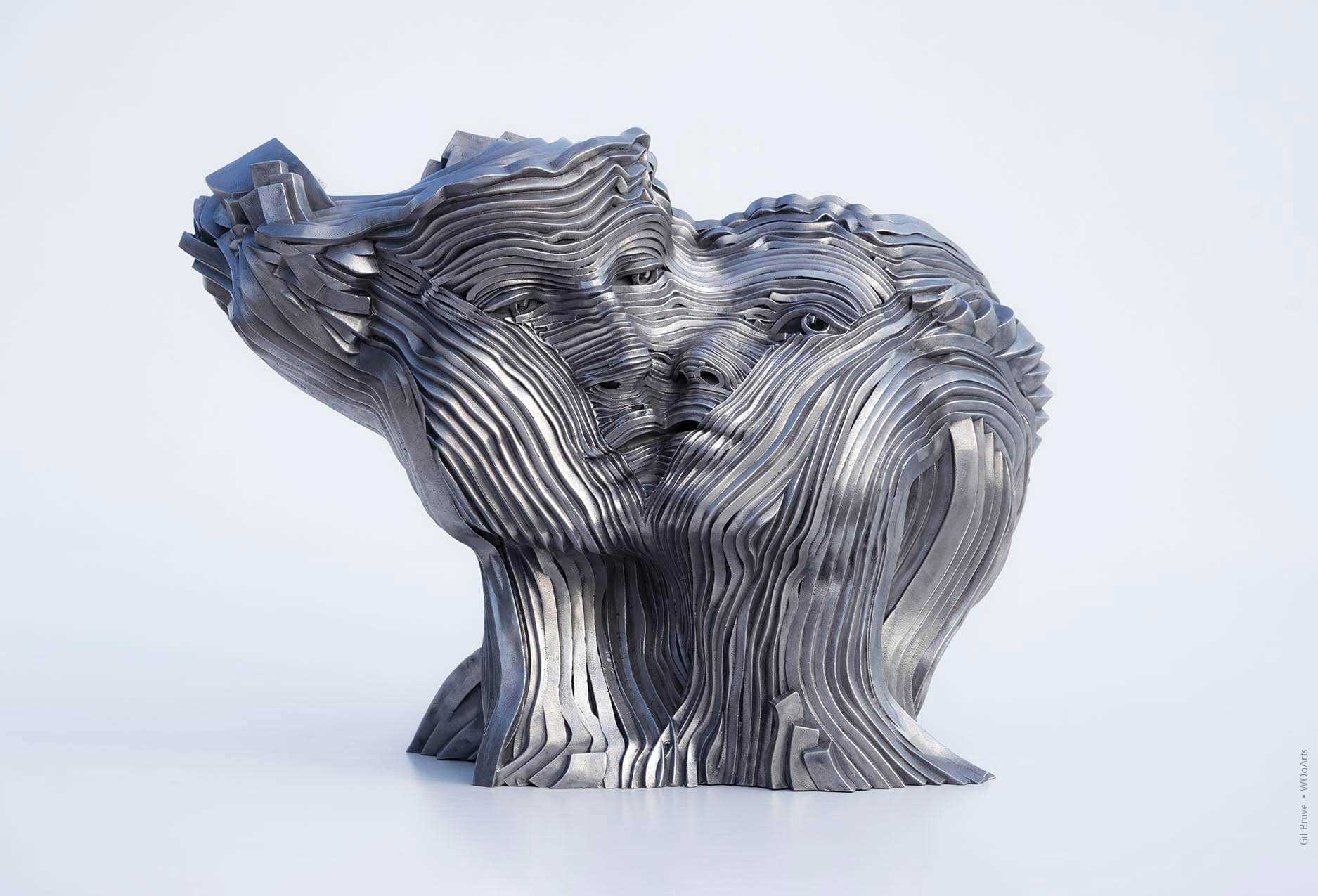
Technical Skill:
- Innovative Techniques: Bruvel’s use of innovative techniques, such as blending traditional sculpting methods with modern materials, showcases his technical prowess. The seamless integration of various materials in his sculptures demonstrates a mastery of craft.
- Attention to Detail: A closer inspection of Bruvel’s sculptures reveals a meticulous attention to detail. The precision in carving, shaping, and finishing surfaces attests to his dedication to achieving a high level of technical excellence.
Artistic Vision:
- Conceptual Depth: Bruvel’s work often possesses a deep conceptual underpinning, exploring themes of human experience, consciousness, and interconnectedness. The thoughtfulness behind each piece adds layers of meaning, inviting viewers to engage on an intellectual and emotional level.
- Expressiveness: The expressive qualities in Bruvel’s sculptures capture the essence of his subjects, whether they be human figures or abstract forms. The ability to convey emotion and narrative through non-traditional mediums is a testament to his artistic vision.
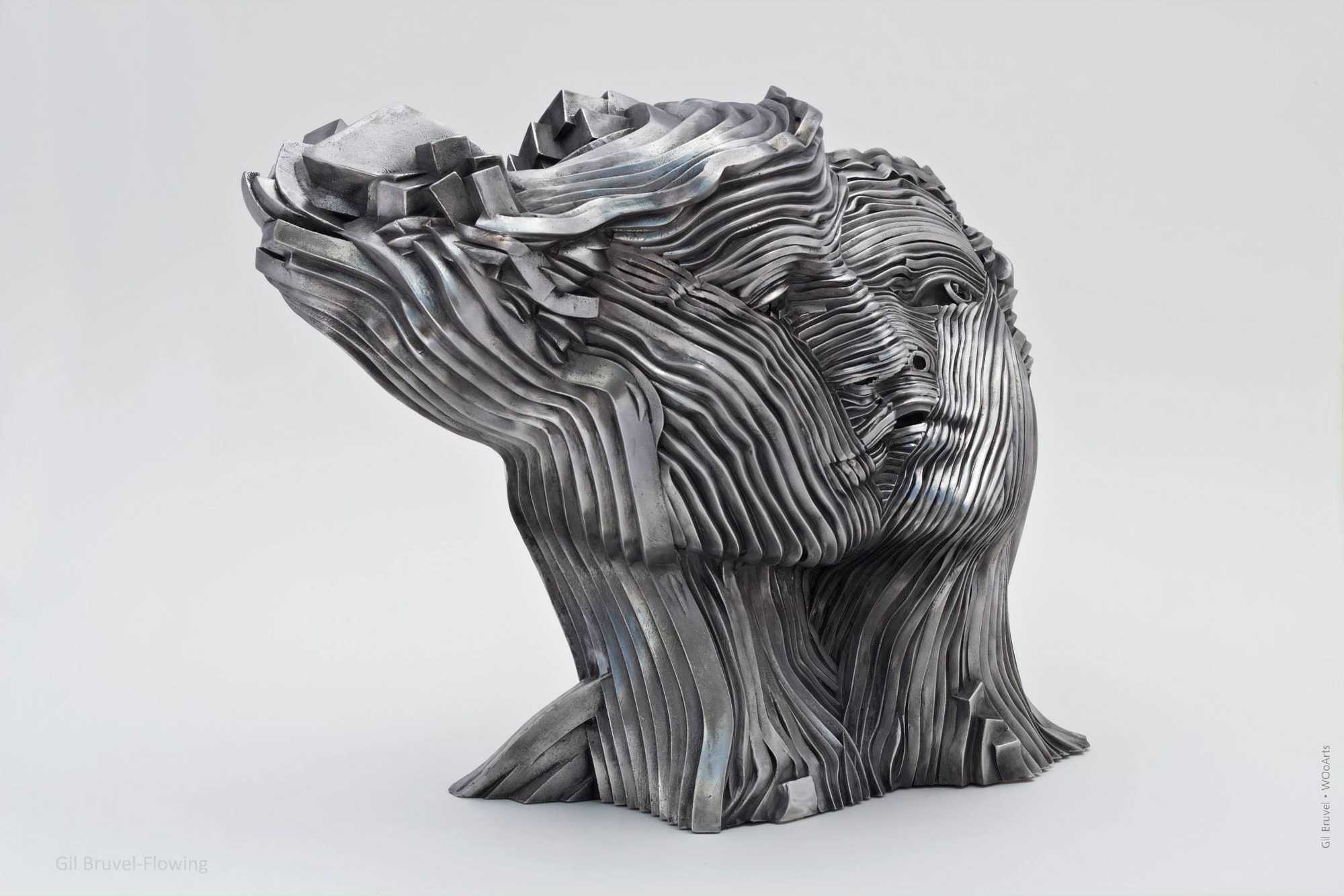
Aesthetic Considerations:
- Visual Impact: Bruvel’s sculptures command attention with their visual impact. The interplay of form, color, and texture contributes to a dynamic and engaging aesthetic that captivates viewers.
- Coherence in Style: Over the course of his career, Bruvel has maintained a certain coherence in his artistic style while also evolving and experimenting. This balance between consistency and evolution is crucial for the longevity and recognition of an artist.
Critique:
- Accessibility: While the complexity of Bruvel’s work is undoubtedly a strength, it may pose a challenge in terms of accessibility for some viewers. The intricate symbolism and abstract nature of some pieces might require a deeper understanding of art or additional context.
- Exploration of Themes: It’s important to assess whether the recurring themes in Bruvel’s work continue to evolve and resonate with contemporary audiences. Artists are often critiqued for either stagnating in their thematic exploration or for straying too far from their established identity.

In conclusion, Gil Bruvel’s work is characterized by technical excellence, a profound conceptual foundation, and a visually compelling aesthetic. Like any artist, he is subject to critique based on individual preferences and the ever-evolving landscape of the art world. It would be valuable to consider his contributions within the broader context of contemporary sculpture and artistry.
Gil Bruvel is a visionary artist, capable of translating complex ideas and fleeting impressions into stunning works of art. His curiosity about the human condition and the workings of the human mind is honed through daily meditative practice. His art emerges from a deep contemplation of images, emotions, and sensations, which he refines continually before he casts them into material form.
We try and fail until we get it right. Failure is essential in crystalizing and improving on our initial ideas. There is a great complexity to us and to all that surrounds us, which is not accessible unless we are willing to move beyond physicality and into the deeper layers of our consciousness. Therein lies an experience that is to be felt, rather than described or rationalized. Bruvel’s challenge as an artist is to give it a non-verbal expression through the use of form, patterns, and color.
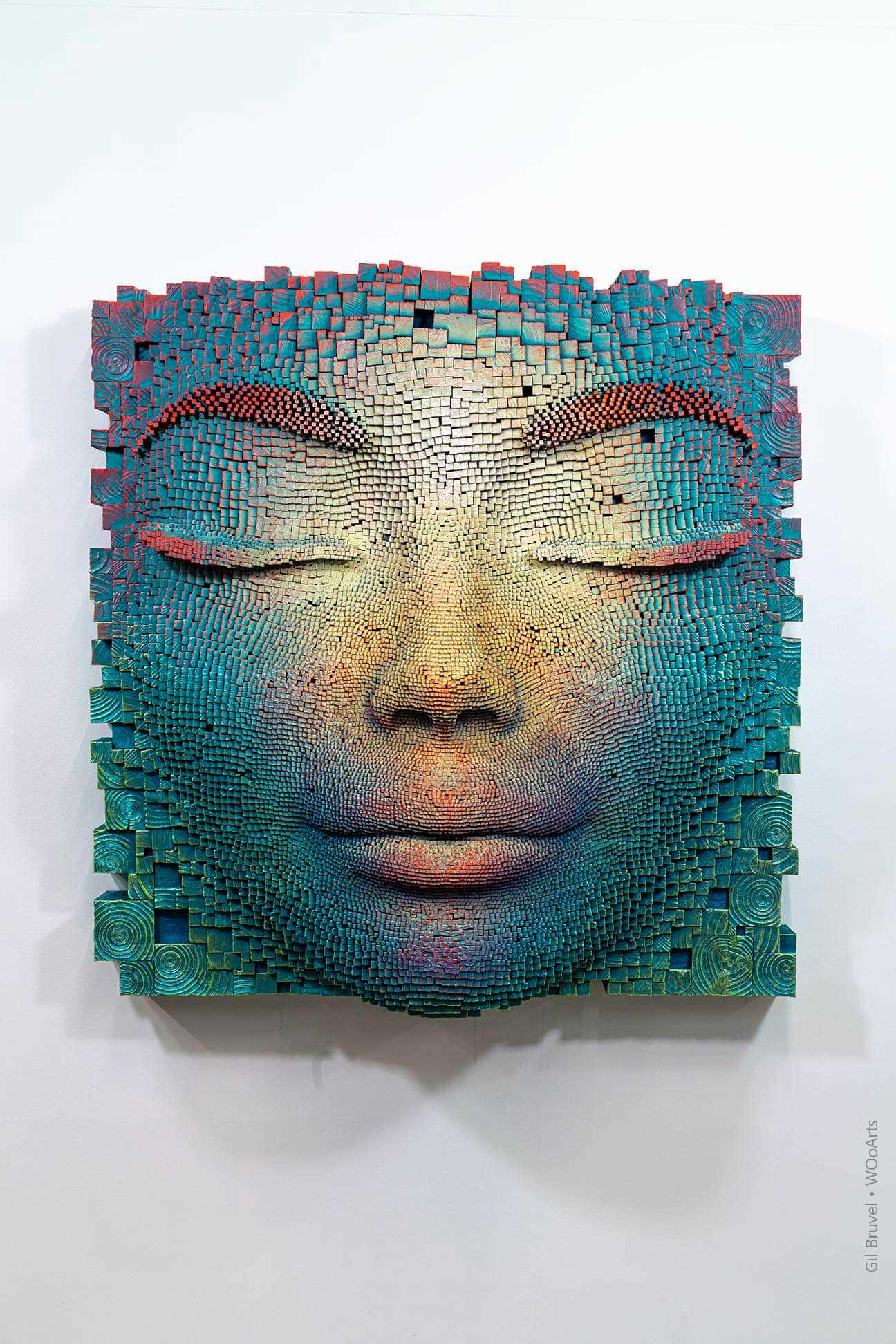
Bruvel’s early work is marked by a desire to escape, rather than penetrate, reality at a deeper level. He was influenced by the surrealists such as Salvador Dali, Max Ernst, and Georgio de Chirico. His art was an exercise in imagination through the painting of alternate realities.
While elements of surrealism have been present in his works throughout his career, Bruvel’s later efforts play with the distortion of realities, duality, and multiple perspectives. In his Cubist series, he reduces human form to component planes and geometric shapes, using negative space to create positive form, and vice versa. He seeks to reinforce the notion of fluidity by expressing multiple viewpoints simultaneously. Bruvel often bends or extends the lines that define human form, dissolving its rigidity and allowing it to connect with the flow that constantly surrounds it. To convey the complex interplay of forces that immerse us, he disrupts vertical lines by inserting horizontal ones. He creates intentional gaps and negative space to highlight disconnect.
Having trained extensively in his father’s cabinet-making business and later at a prestigious restoration workshop, Bruvel’s work displays a mastery of technique and high-level craftsmanship. He moves through a wide range of media and forms with ease. His sculptures in bronze, wood, and stainless steel, as well as his functional furniture and mixed media, all reflect a well-defined move towards three-dimensional representation. The influence of architects such as Zaha Hadid, Frank Gehry, and Lebbeus Woods is present in many of his pieces.
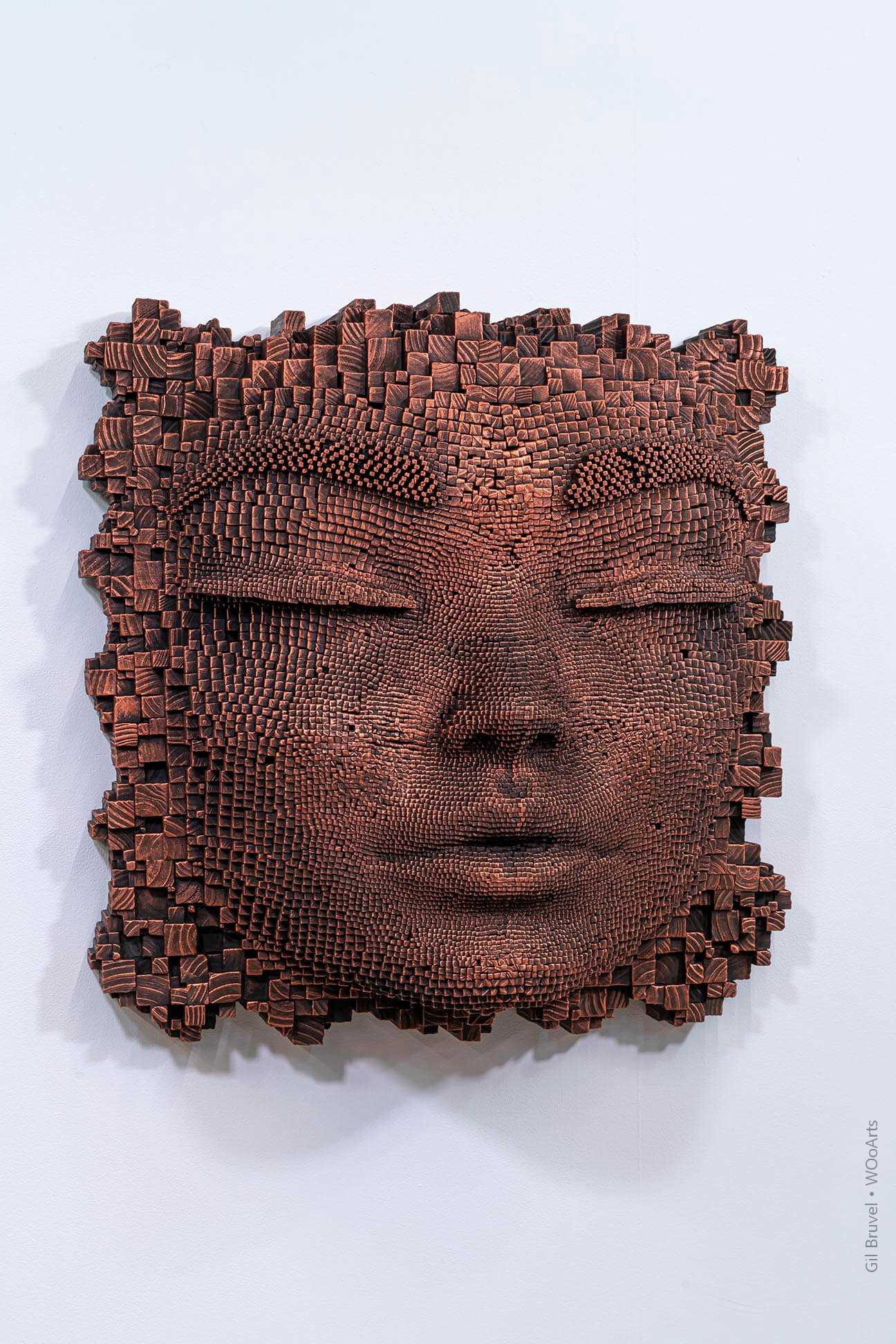
Many themes that define Bruvel’s work culminate in his most recent series, “Bending the Lines.” At first glance, we recognize the ever-prevailing human form but are instantly transfixed by the thousands of wooden shafts that comprise the work. The pixelated outlines mimic our complex neural pathways, while his use of gradient color reinforces our minds’ interconnectedness. The wood is charred to show the impact of natural phenomena on the physical form and its inherently transient nature, which is transformed by the passage of time, revealing further patterns and detail.
Gil Bruvel was born in Australia, but raised in the South of France. He currently resides in Wimberley, Texas. Represented by a host of galleries worldwide.
A word from Gil Bruvel:
“I am artist because it is the conduit to release the ideas and visuals I carry daily. Since I was a little boy I have pursued my own exploration rooted in the unconscious mind and nurtured with daily practice using a variety of mediums of artistic expression. My artistic process developed organically from my father’s cabinet shop to the stainless steel sculptures I create today.
I am very passionate about my current expression – Flow Series. It is the culmination of my life’s work. The overwhelming feeling of purpose and expression started with my design of George’s Horse. I wanted to do something new and contemporary, but it wasn’t exactly the idea of modernity that led me to this design.
The ribbons with which I was creating lent me direct lines of expression; and with these tools I could finally capture the dynamism and weight I was seeking.
I remember when I started to experiment shaping up the general line of George’s Horse. I could literally feel the infusion of motion enter my work in real time. With each ribbon, the eye bends, curves, assembles, deforms, and traces the edges of each subject. The ribbons direct my emotions and creative flow with a force like I have never felt before. The smaller ones are subtle-the larger ones are essential, but they all flow together to create one being. The multiple patterns of the lines effectively illustrate the multifaceted parts of what makes us human.
As I further experimented with My Mirror’s Remains, Dichotomy, and The Wind, I began to understand that these ribbons exist in a universe of parallels. Once they converge, the overwhelming theme of the daily juxtaposition of human frailties and strength emerges”.


